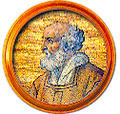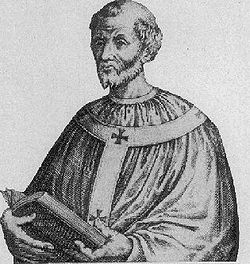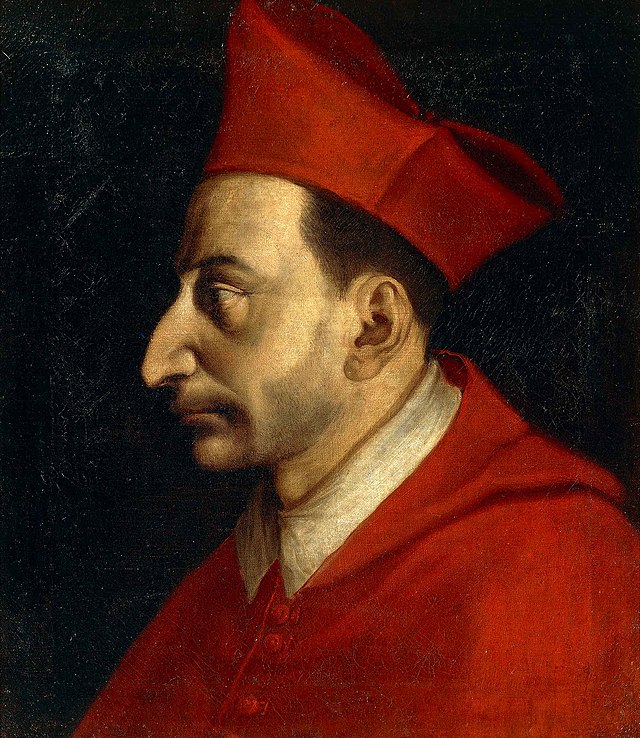Top Qs
Timeline
Chat
Perspective
List of cardinal-nephews
From Wikipedia, the free encyclopedia
Remove ads
A cardinal-nephew is a cardinal elevated by a pope who was his uncle, or more generally, his relative. The practice of creating cardinal-nephews originated in the Middle Ages, and reached its apex during the 16th and 17th centuries.[1] From the Avignon Papacy (1309–1377) until Pope Innocent XII's anti-nepotism bull, Romanum decet pontificem (1692), nearly every pope who appointed cardinals appointed at least one relative to the College of Cardinals,[n 1] including every Renaissance-era pope.[2]

Although nephews were the most common relation to be elevated to the College, other family members included sons and grandsons (whether legitimate, illegitimate, or adopted), brothers, grandnephews, cousins and even uncles.[1][2] At least 15, and possibly as many as 19 cardinal-nephews were later elected pope (Gregory IX, Alexander IV, Adrian V, Gregory XI, Boniface IX, Innocent VII, Eugene IV, Paul II, Alexander VI, Pius III, Julius II, Leo X, Clement VII, Benedict XIII, and Pius VII, perhaps also John XIX, Benedict IX, if they were really promoted cardinals, as well as Innocent III and Benedict XII, if in fact they were related to their elevators). One became antipope (John XXIII), and two or three were canonized (Charles Borromeo, Guarinus of Palestrina, and perhaps Anselm of Lucca, if in fact he was really elected cardinal).[n 2]
Similarly created cardinals include cardinal-nephews of antipopes and papal relatives made cardinals by other popes.
Remove ads
Notes on symbols
Because statements concerning the familial ties of popes and cardinals prior to the 14th century are often of much later origin, some sources regard their factual accuracy as dubious. Thus, individuals are marked with:
 , when the existence of the familial relationship is disputed, or
, when the existence of the familial relationship is disputed, or , when their promotion to the cardinalate is disputed.
, when their promotion to the cardinalate is disputed.
Occupants of the curial office of the Cardinal Nephew are denoted with †.
Remove ads
11th century

Remove ads
12th century


13th century

Remove ads
14th century




Remove ads
15th century


Remove ads
16th century





Remove ads
17th century


Remove ads
18th century

19th century

Footnotes
- Until Pope Innocent XII, the only exceptions were popes who did not appoint the cardinals at all (Pope Pius III, Pope Marcellus II, Pope Urban VII, Pope Leo XI) and Pope Adrian VI (who appointed only one cardinal).
- Miranda, citing older authors such as Alphonsus Ciacconius, says that Pope Anastasius IV (Corrado della Suburra) was probably a nephew of his elevator Honorius II;[3] however, modern scholars are in agreement that Corrado was created by Paschalis II, and deny or do not mention his relationship with Honorius II.[4]
- The source for the statement that Odon was nephew of Urban II is Ferdinando Ughelli (1594–1670), considered reliable by Klewitz because he was able to verify Ughelli's other statements concerning that cardinal.[13] Date of his promotion is given according to Hüls, who does not mention this relationship.[14]
- Etienne de Bar, who was nephew of Callixtus II and bishop of Metz 1120–1163, is commonly identified with cardinal Stephanus of S. Maria Cosmedin, who appears in the papal bulls between 1120–1128, but Ganzer considers it erroneous that de Bar was a cardinal.[16] Hüls also reject this identification and adds that cardinal Stephanus of S. Maria in Cosmedin was probably brother of cardinal Giovanni of Crema.[17]
- Several sources doubt his promotion to the cardinalate indicating that he is confused with Cardinal Uberto Crivelli, future Pope Urban III, since they both are listed as cardinals of the title of S. Lorenzo in Damaso at the same time (1182–1185).[26] Cardella[27] affirms his cardinalate, but raises the possibility of confusion with Uberto Crivelli.
- Maleczek says that the theory that Giovanni di San Paolo was nephew of Celestine III is based on the very uncertain identification of the future cardinal with a papal subdeacon who served as legate in France ca. 1191 and is attested as nephew of Celestine III; therefore, the status of Giovanni di San Paolo as cardinal-nephew remains uncertain.[39]
Remove ads
Notes
References
Wikiwand - on
Seamless Wikipedia browsing. On steroids.
Remove ads
